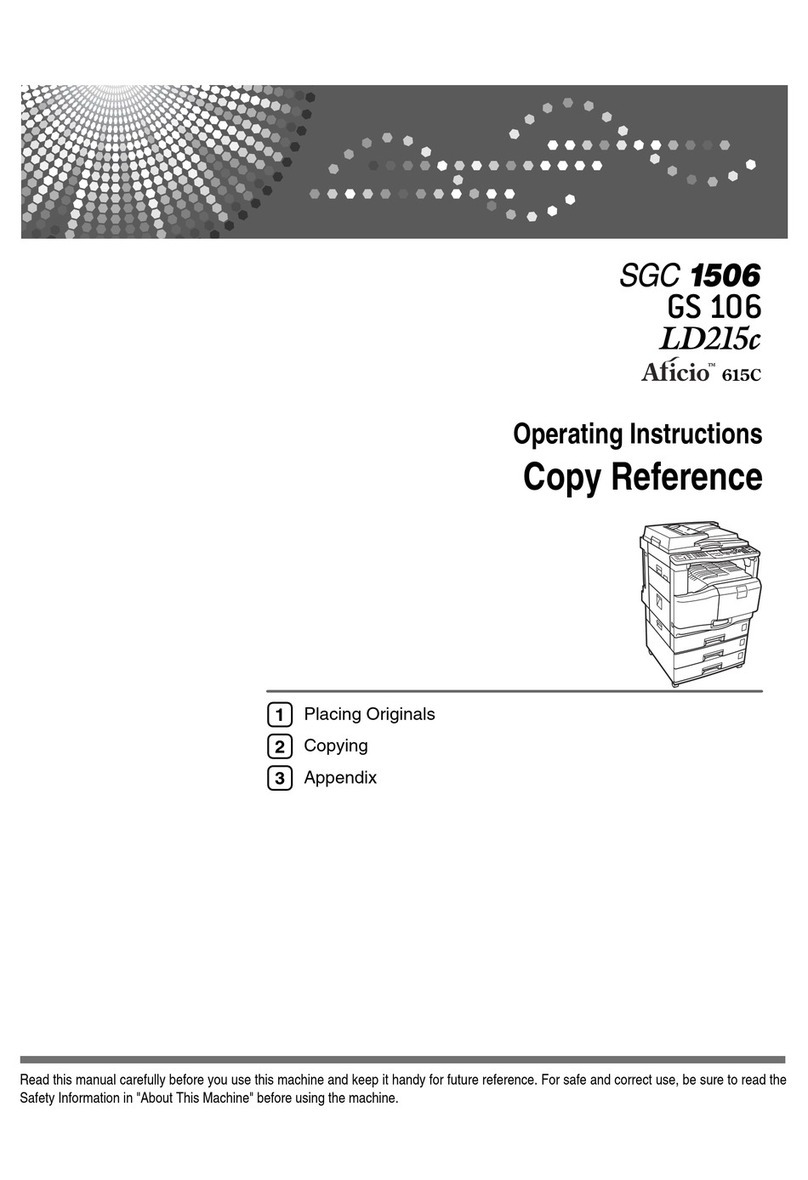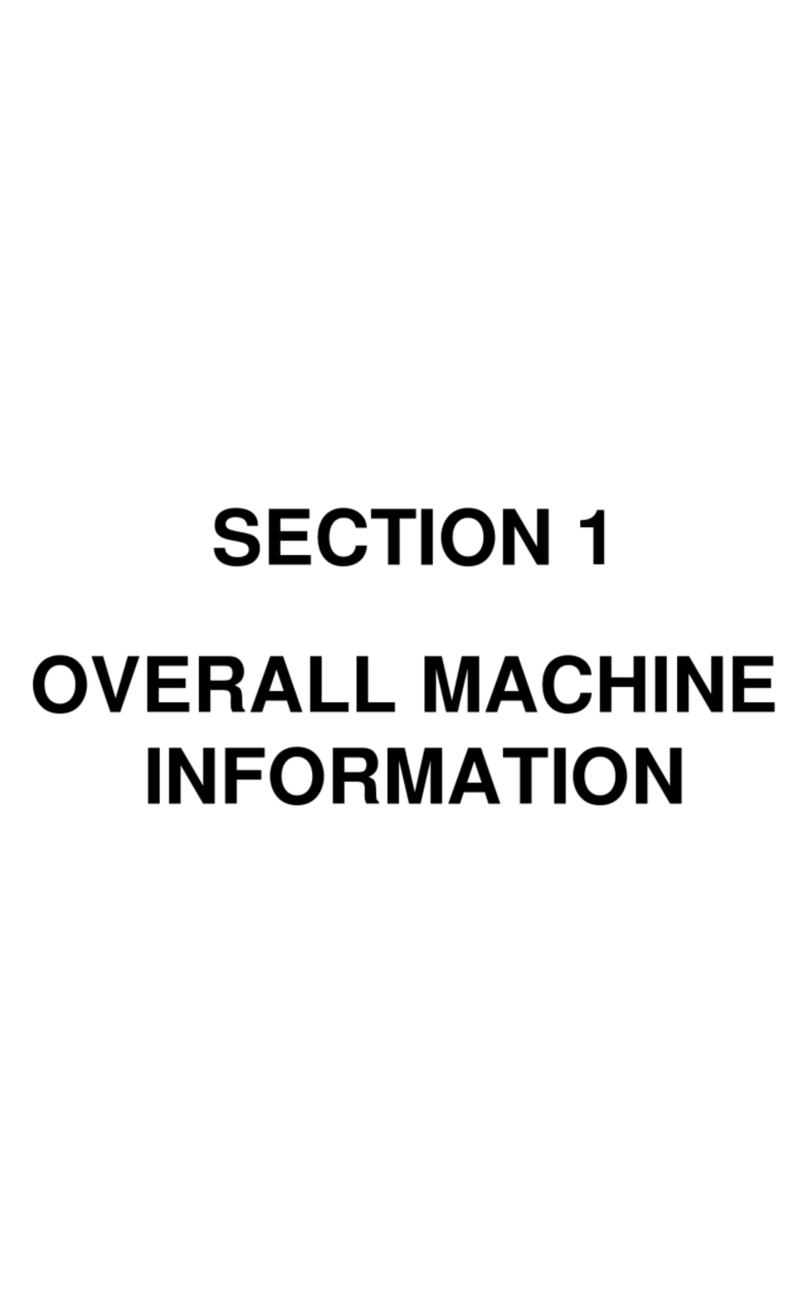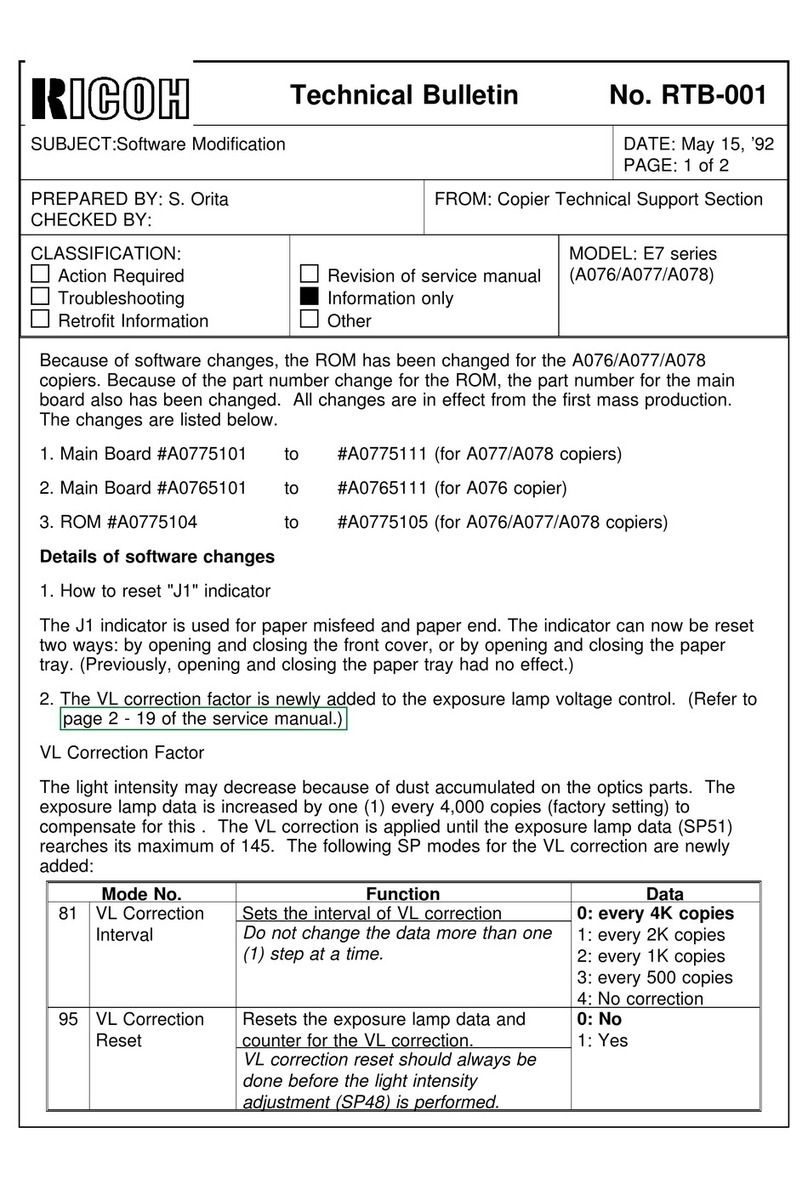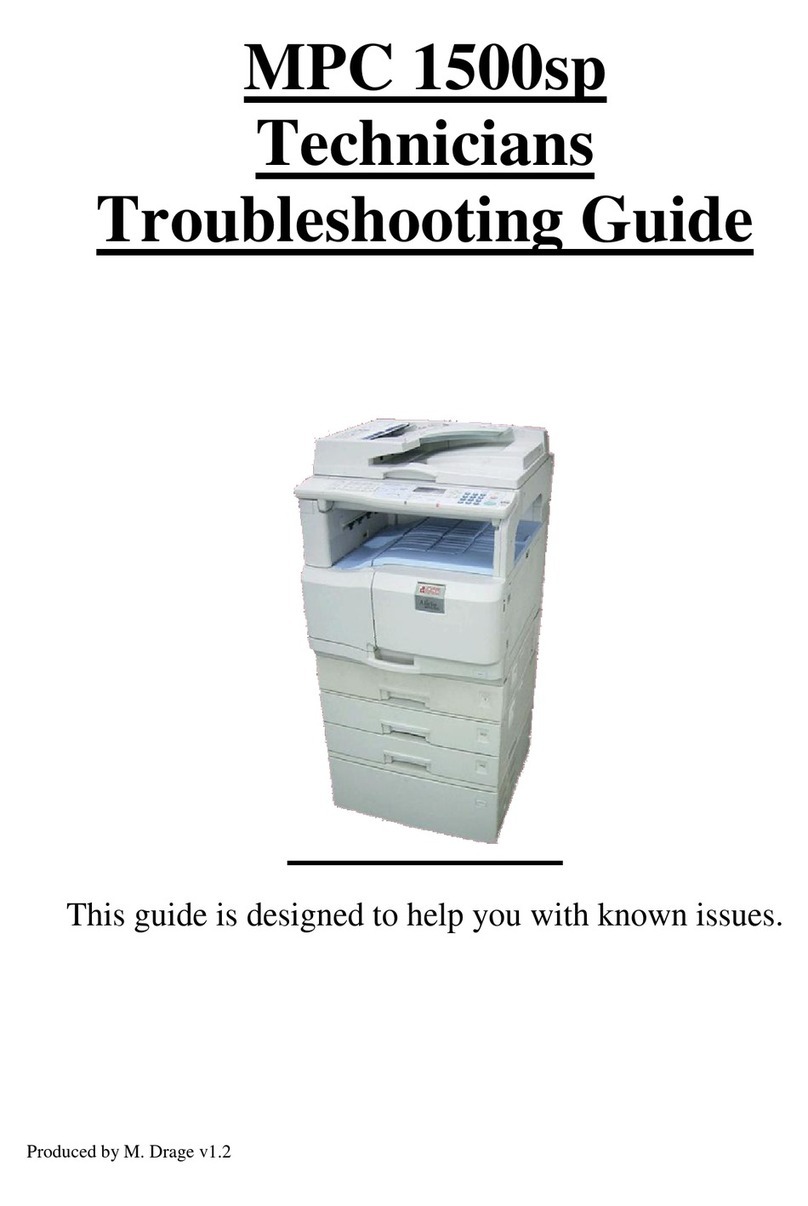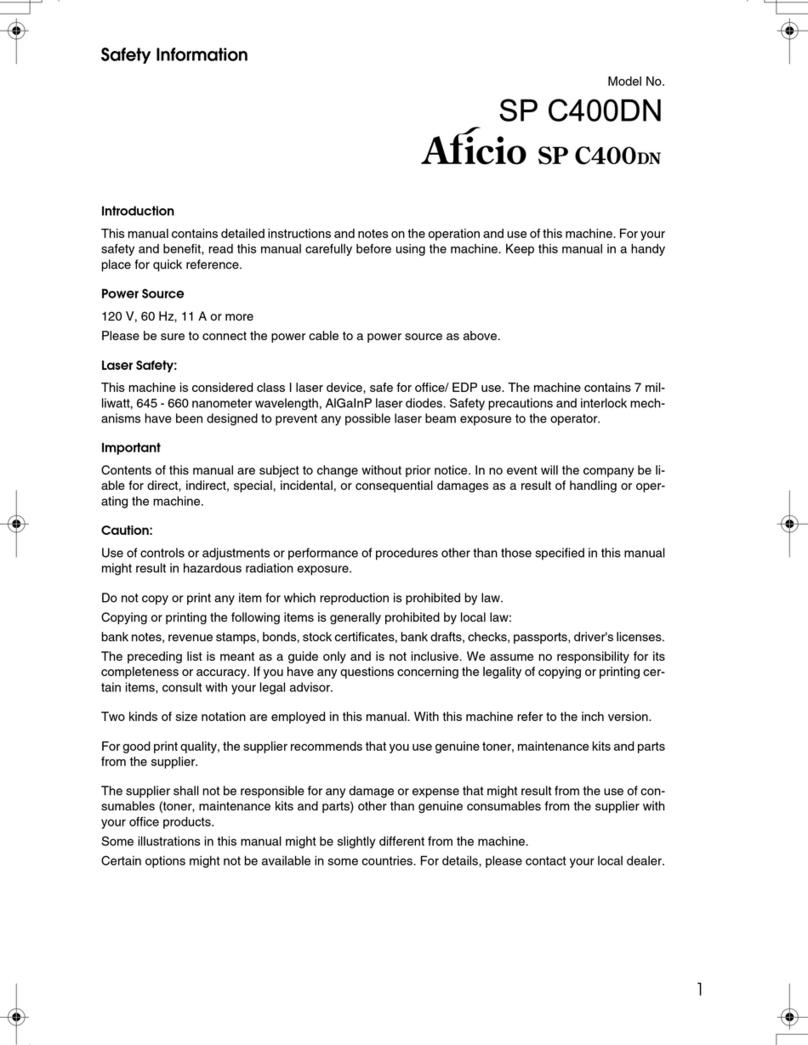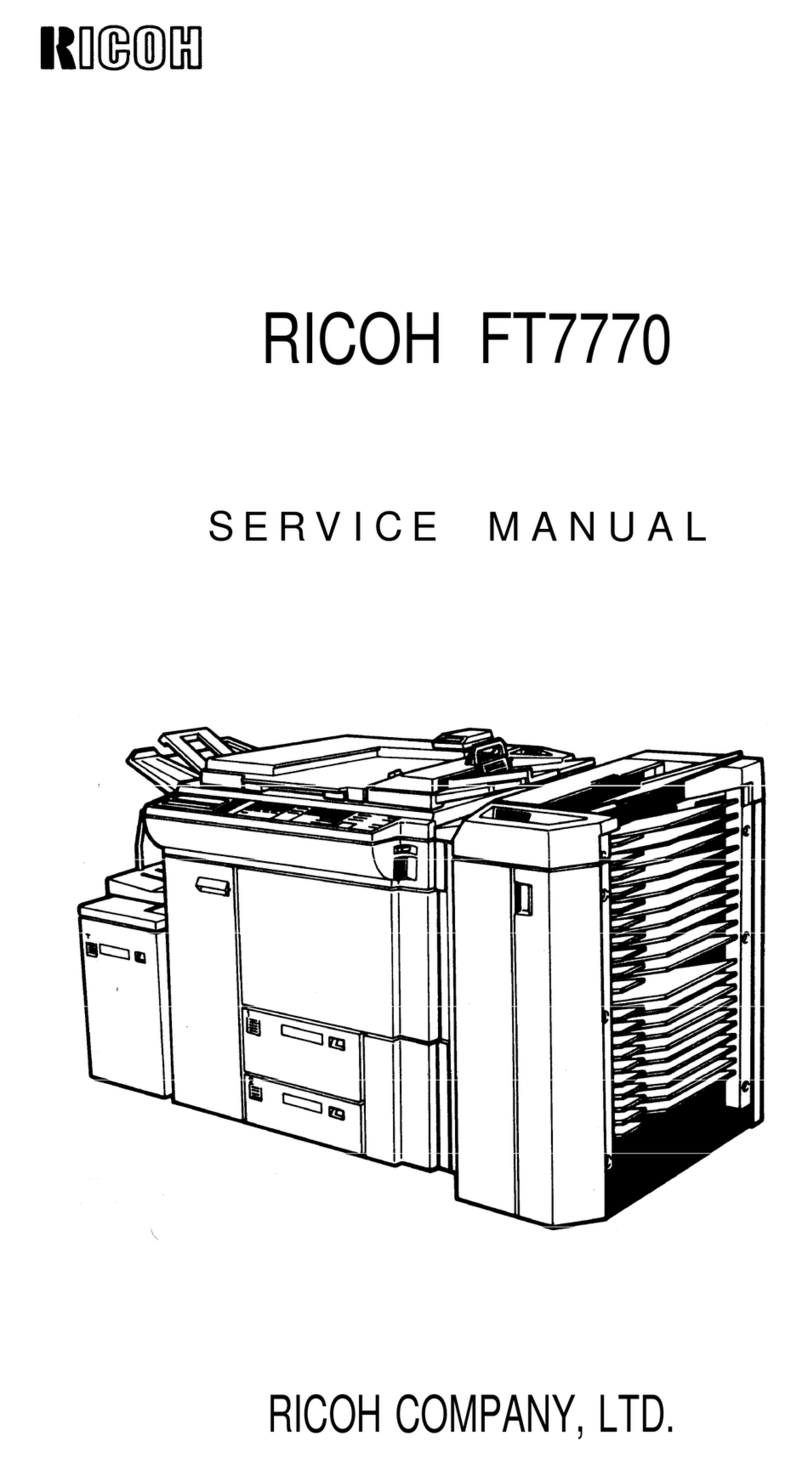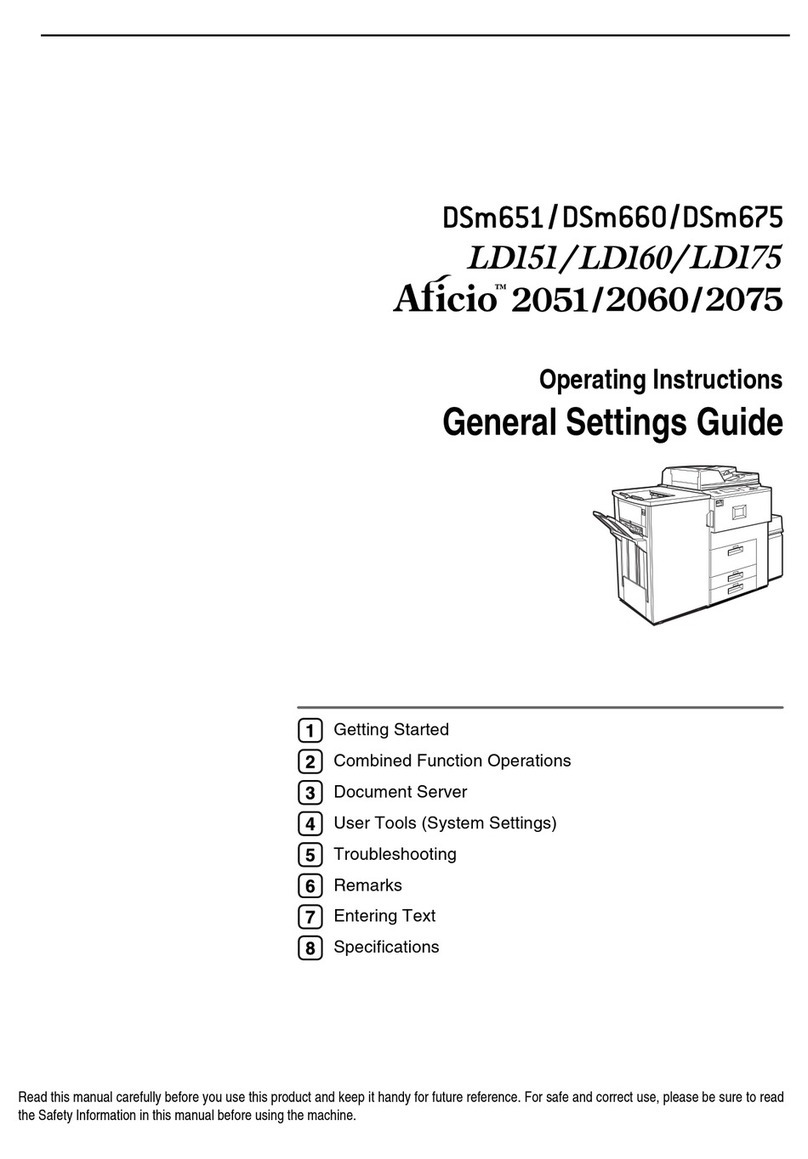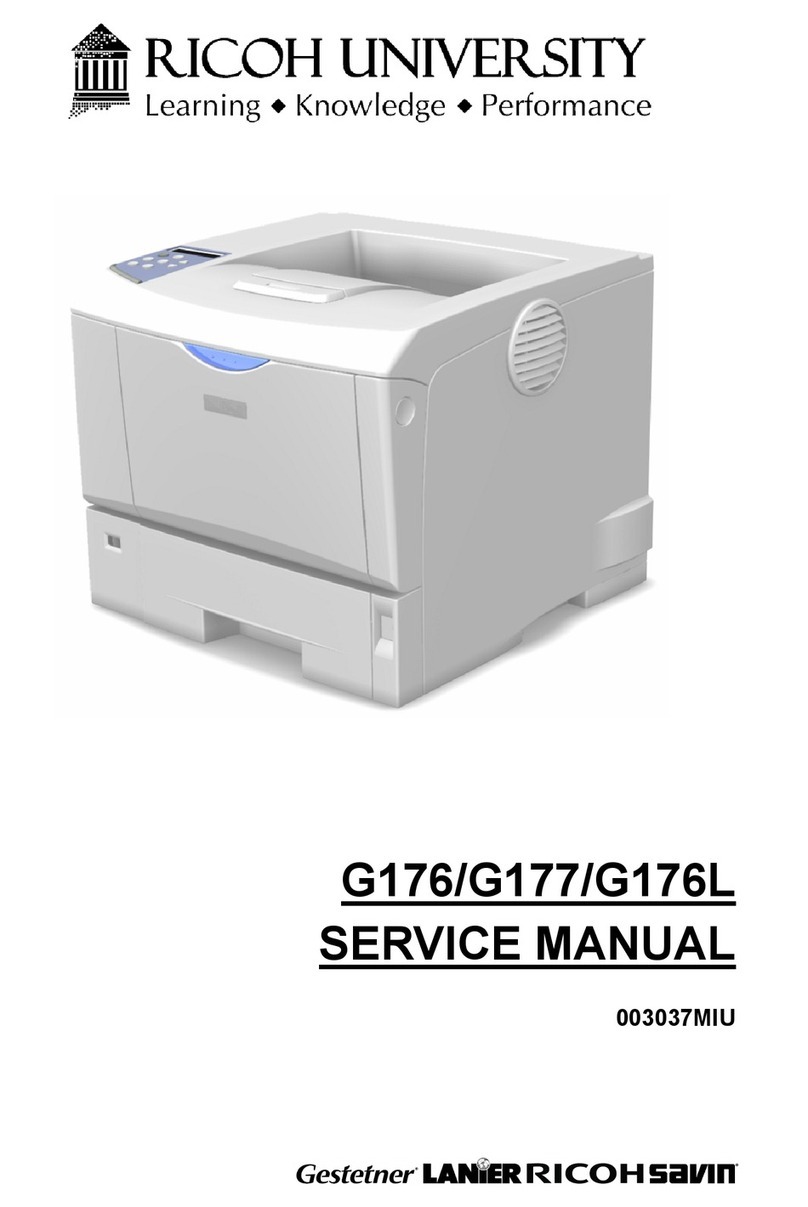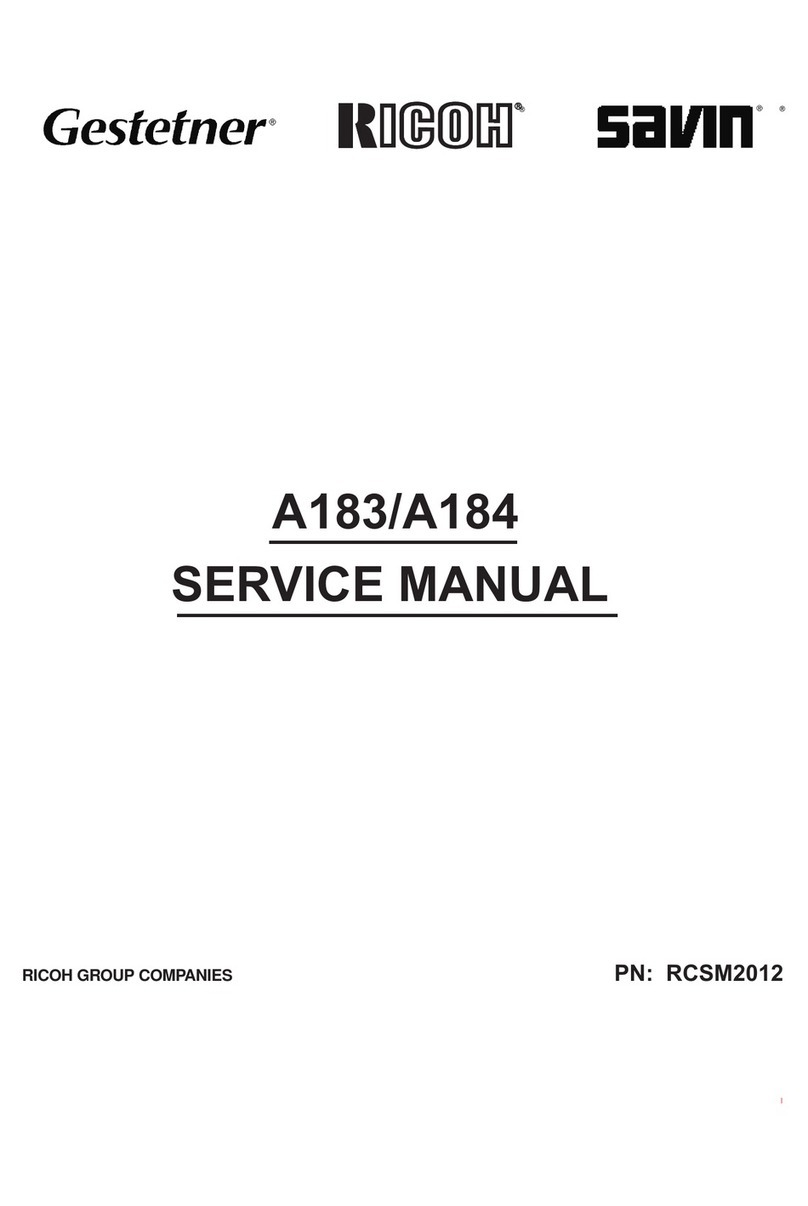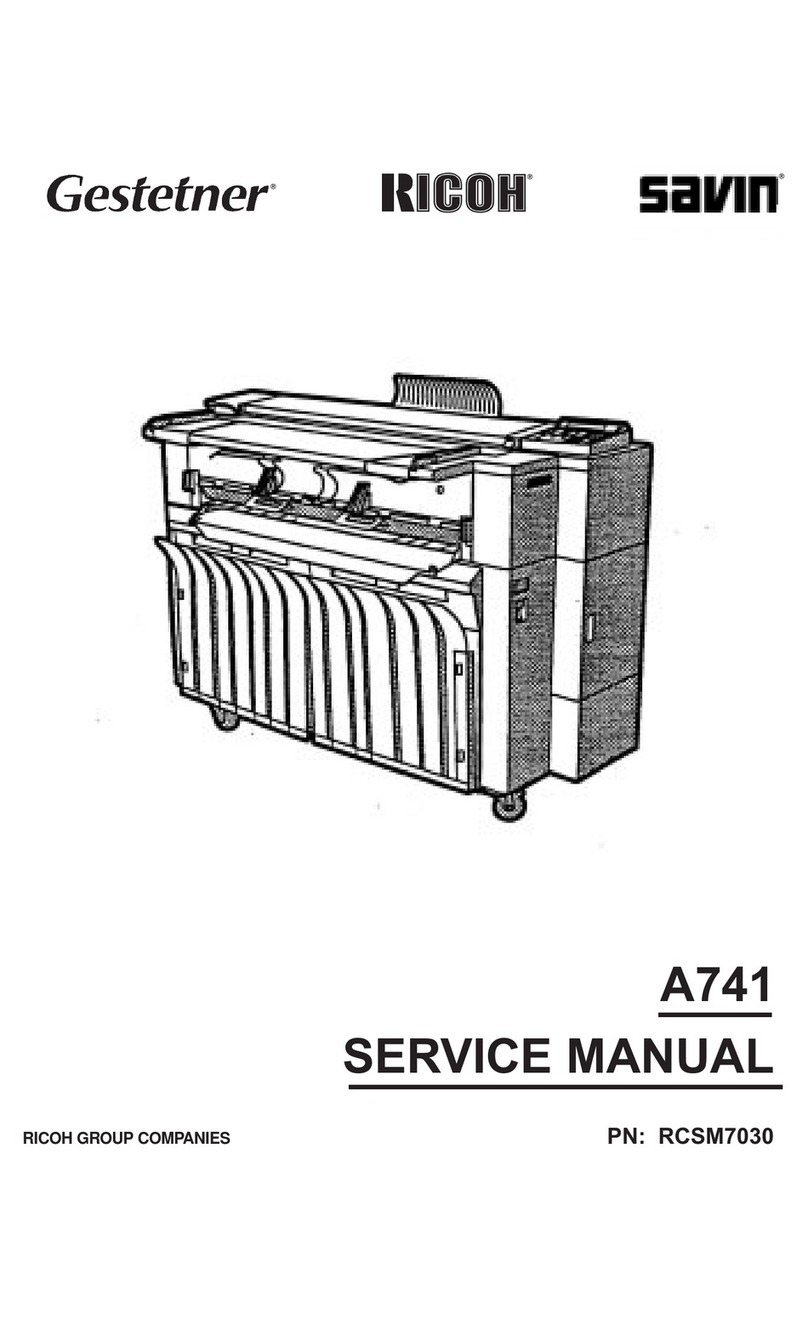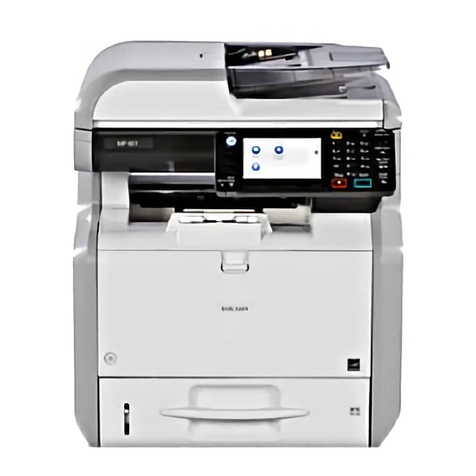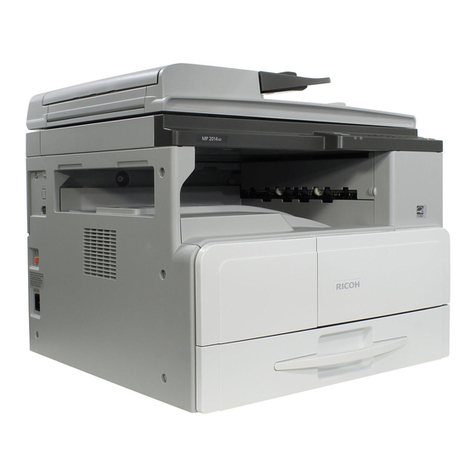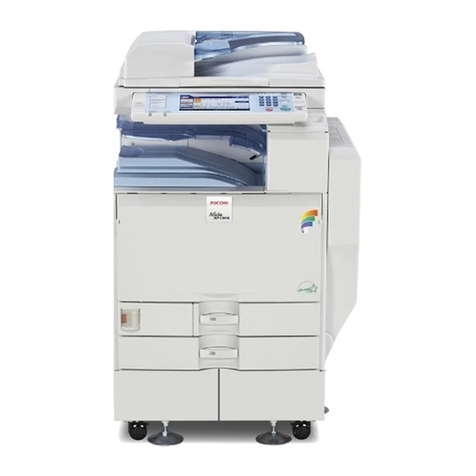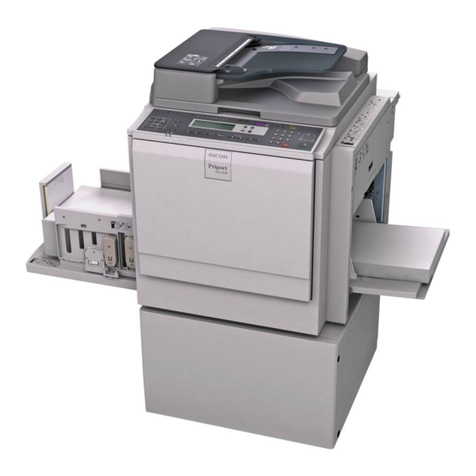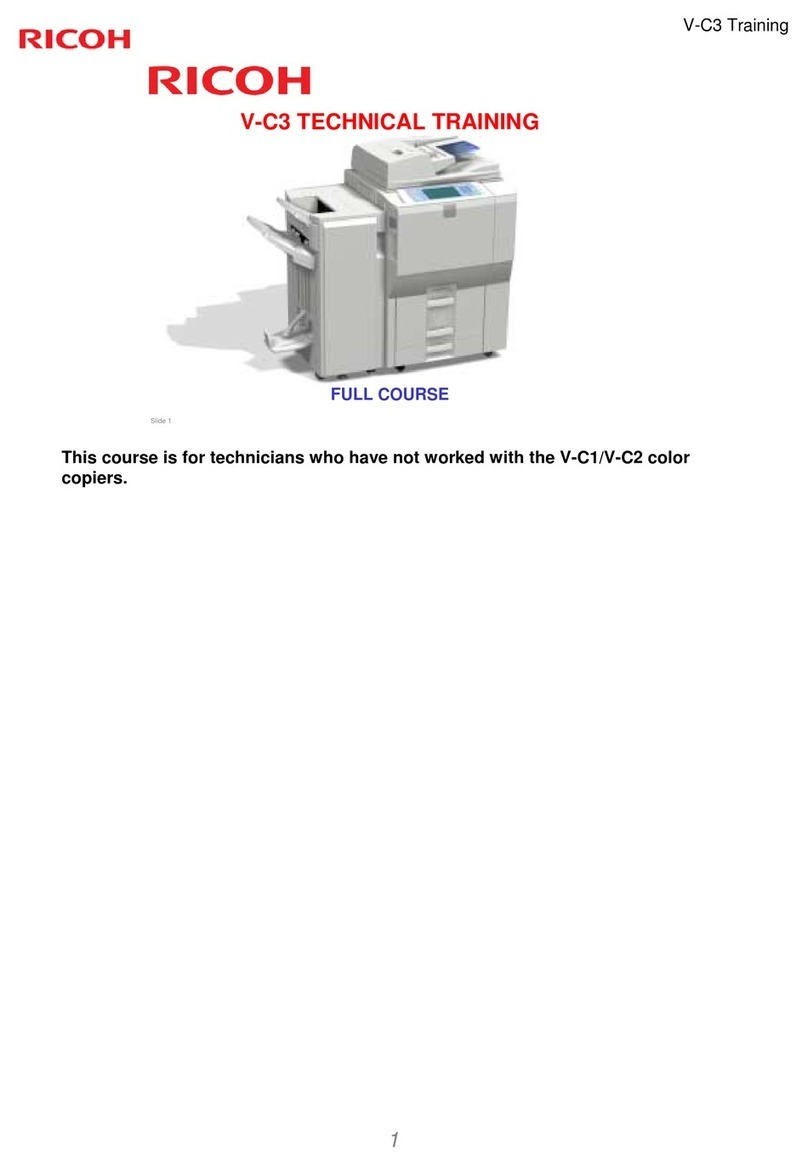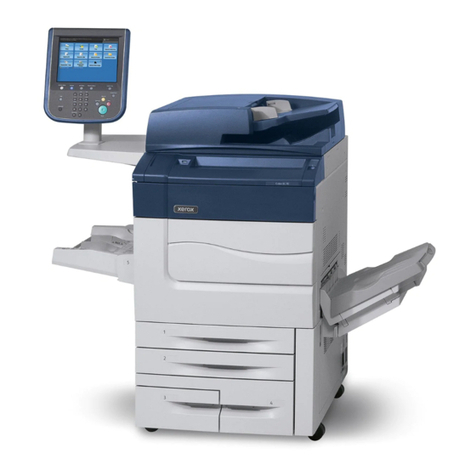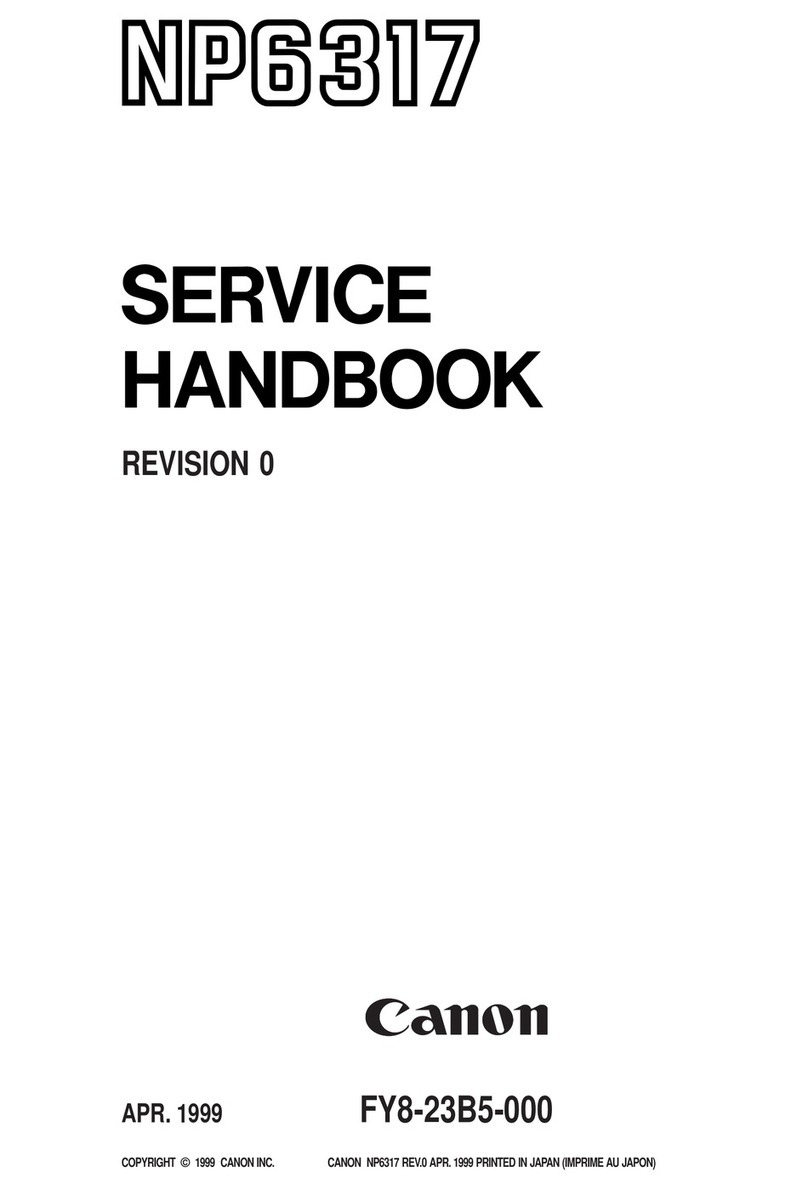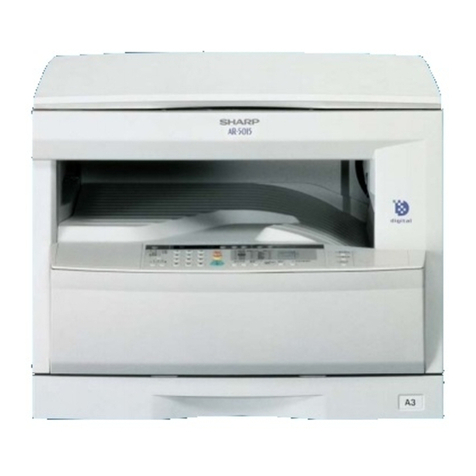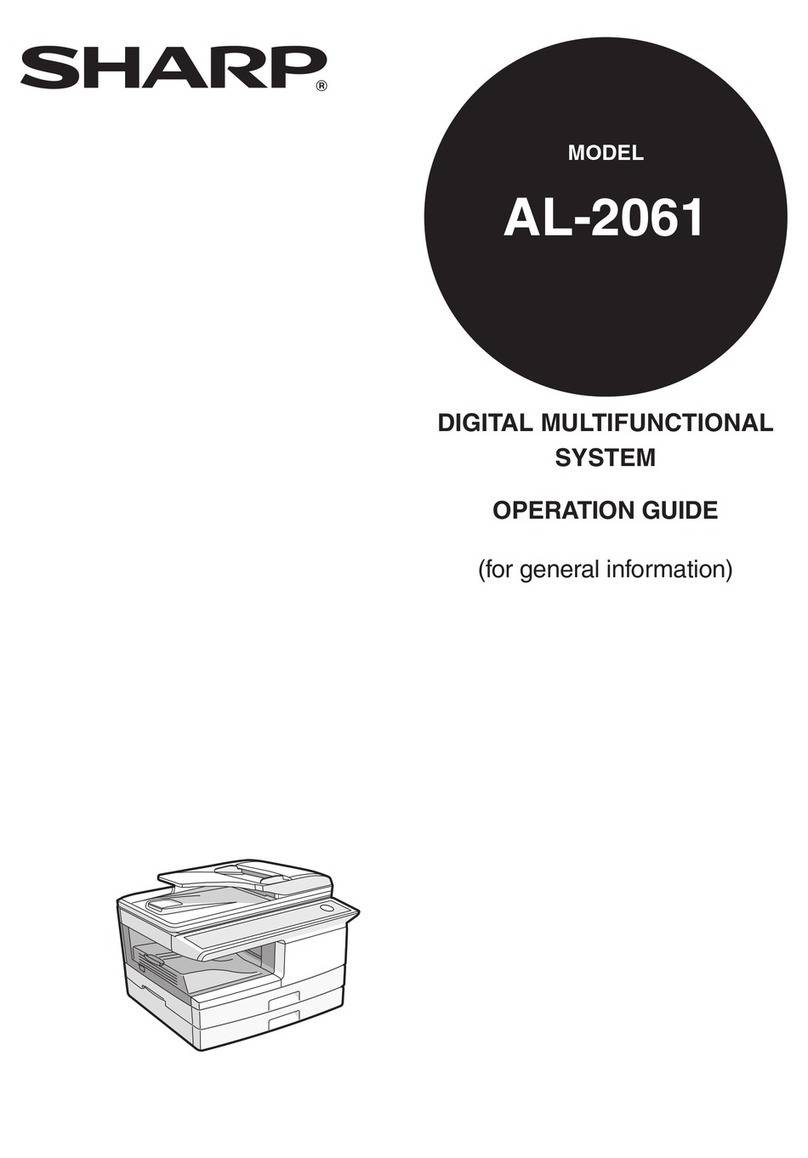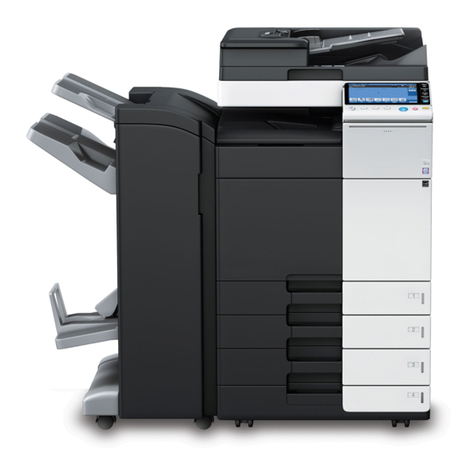
1. DRUM CHARGE
In the dark, the charge corona unit gives a uniform positive charge to the selenium drum.
The charge remains on the surface of the drum because the photo conductive selenium
has electrical resistance in the dark.
2. EXPOSURE
An image of the original is reflected to the selenium drum surface via the optics assembly.
The charge on the drum surface is dissipated in direct proportion to the intensity of the
reflected light, thus producing an electrical latent image on the drum surface.
3. ERASE
The erase lamp illuminates the areas of the charged drum surface that will not be used
for the copy image. The resistance of the drum in the illuminated areas drops and the
charge on those areas dissipates.
4. DRUM POTENTIAL SENSOR
The drum potential sensor detects the electric lines of force from the electric potential on
the drum to compensate image processing elements.
5. DEVELOPMENT
Negatively charged toner is attracted to the positively charged areas of the drum, thus
developing the latent image. (The negative triboelectric charge is caused by friction
between the carrier and toner particles.)
6. PRE-TRANSFER
The pre-transfer corona (PTC) applies a negative dc charge and an ac charge to the
drum. The dc charge increases the negative potential of the toner to improve toner
transfer to paper. The ac charge decreases positive charge on the drum and makes
paper separation easier. The pre-transfer lamp (PTL) also makes paper separation easier
by illuminating the drum and decreasing the positive charge on the drum.
7. IMAGE TRANSFER
Paper is fed to the drum surface at the proper time so as to align the copy paper and the
developed image on the drum surface. Then, a strong positive charge is applied to the
back side of the copy paper, providing an electrical force which causes the copy paper to
be attracted to the drum’s surface. At the same time, the toner particles are pulled to the
copy paper from the drum’s surface.
8. PAPER SEPARATION
A strong ac corona discharge is applied to the back side of the copy paper, reducing the
positive charge on the copy paper and breaking the electrical attraction between the
paper and the drum. Then, the stiffness of the copy paper causes it to separate from the
drum surface. The pick-off pawls help to separate paper which has low stiffness.
9. CLEANING
The cleaning brush first removes remaining toner on the drum surface. Then, the cleaning
blade which is angled against drum rotation (counter blade system) removes the rest of
the toner. The flick roller mechanically removes the toner on the cleaning brush.
10. QUENCHING
Light from the quenching lamp electrically neutralizes the drum surface.
31 July 1995 COPY PROCESSES AROUND THE DRUM
1-7
